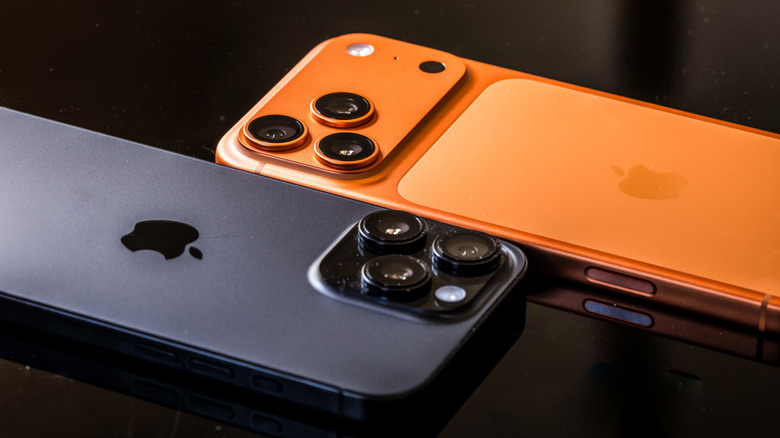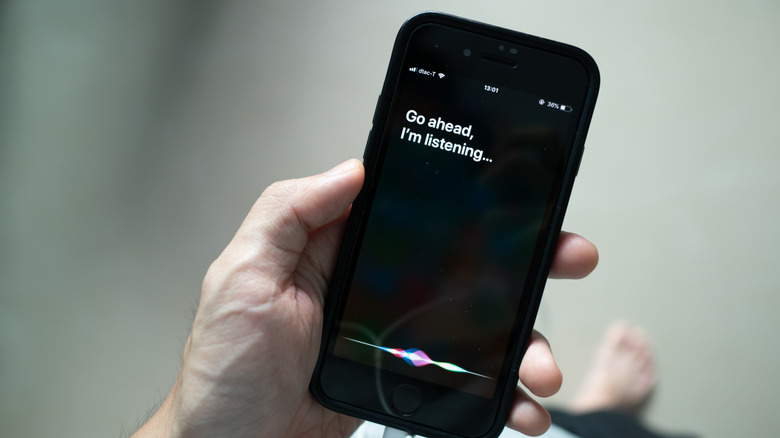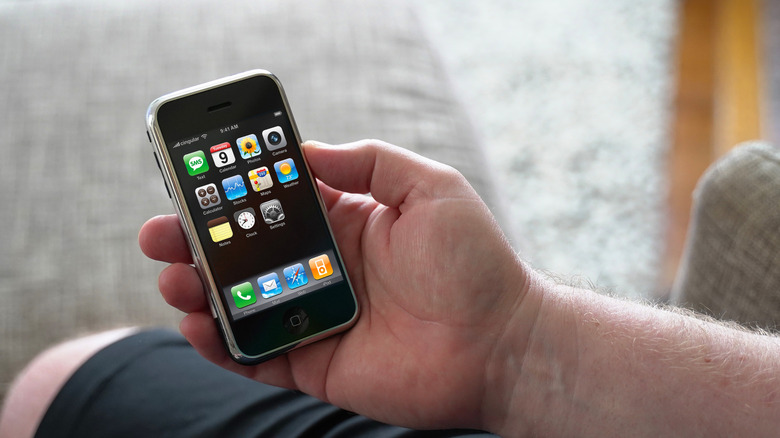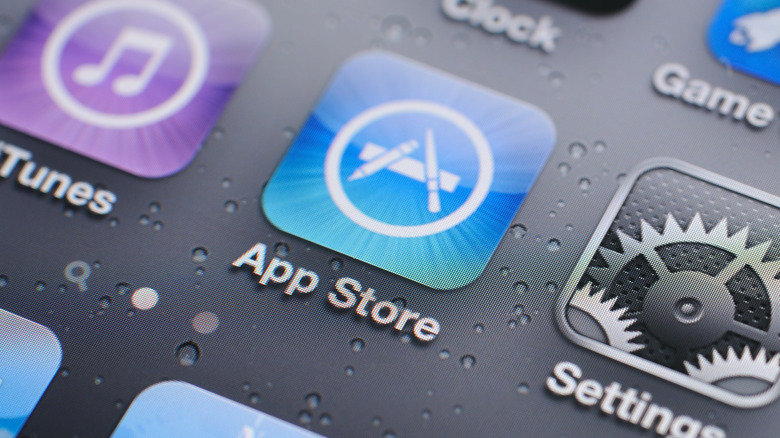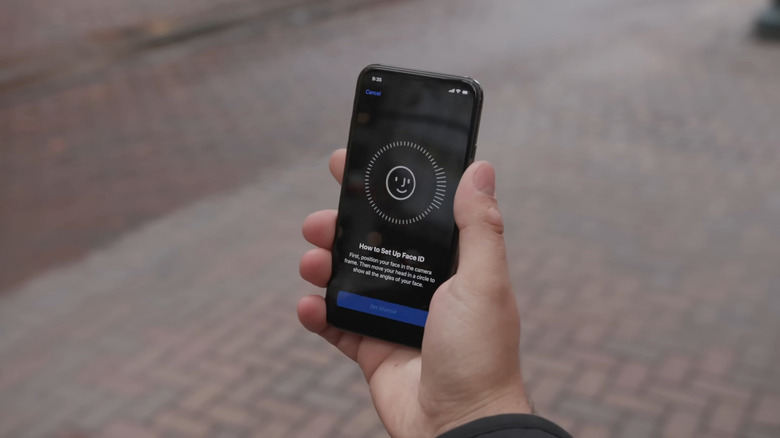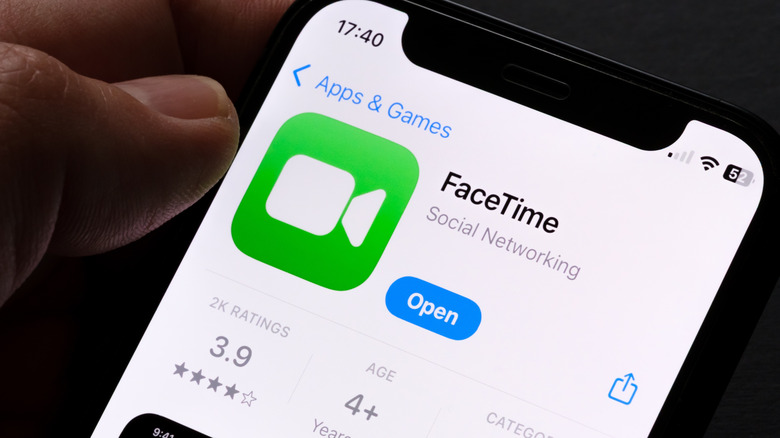5 Ways Apple's iOS & iPhone Changed The World
Consumer electronics have witnessed rapid development in recent decades. Out of all the gadgets we have available in 2025, the mobile phone undoubtedly remains the most popular. Now an instrumental product in our lives, the cell phone has worked its way to being one of the most competitive products, and very few models have had the same impact as the iPhone.
With the project eventually being led by Steve Jobs, the iPhone would change the trajectory of not only Apple but the entire mobile phone scene. Implementing cutting-edge hardware and software that hadn't been seen before on a mass scale, the iPhone introduced pioneering features integrated with the iOS operating system. Both the iPhone and iOS have remained a core product for the brand, with the latest 17 lineup rolling out new features to keep it ahead of the curve. But to get to where we are now, the iPhone has gone through a tremendous evolutions, whether through accessibility, privacy, or overall intuitiveness. Here's a closer look at five times the iPhone changed the face of the industry, leaving everyone else to catch up.
AI Assistance (Siri)
Easy access AI assistance isn't exactly a new concept today, with so many tools out there to help with both broad and more detailed questions. ChatGPT may have set a new standard for the mass market, particularly with the base version being free the use, but 14 years ago, Apple introduced something that had its closest competitors scrambling to replicate it.
This system was none other than Siri. When Apple released it back in 2011, there wasn't anything quite like it as the system was integrated into iOS 5 for the iPhone 4S. Siri is unique in the sense that Apple wasn't the one who built the software from the ground up, but rather acquired Siri Inc. for somewhere around $200 million. Originating at SRI International, Siri was available for other operating systems in 2010 before Apple's purchase, namely Android. However, with the Silicon Valley giant taking it for themselves, it put them well ahead in the AI game.
Siri could already handle tasks like sending texts and setting reminders through a standalone app, but its integration with the iPhone offered a level of intuitiveness that you couldn't find anywhere else. As the years went by, Apple released Siri with other products like the iPad in 2012, even allowing developers to use the software within their own apps through SiriKit.
Multi-touch Interface
The idea of a touchscreen interface is hard to fathom not being native to tech in 2025, with all the major companies eeking out an extra half inch for the screens on their latest models. But when Steve Jobs delivered one of the most iconic presentations in tech history back in 2007, the way people interacted with their phones changed dramatically.
Phones were big in 2007, but standard numeric keypads were commonplace. Apple sought to revolutionize the device, streamlining it like nothing before. Similar to how Siri was introduced to the ecosystem, Apple acquired a company called FingerWorks in 2005, which gave the brand all the patents for the multi-touch technology FingerWorks had been working on. This proved instrumental in Apple developing the 3.5-inch touchscreen for the first iPhone. Again, the concept of a virtual keyboard and pinching/zooming on images is commonplace today, but that's all thanks to the first iPhone. With almost every iOS update and new iPhone model since, the multi-touch interface has continued to be refined, with the new liquid glass design language, which makes the iPhone's display 3D in a sense.
App Store
When the first iPhone launched, it only came with a handful of apps that covered the essentials of a mobile phone, as well as ones that showcased the forward-thinking nature of the product itself. You had things like Messages, Calendar, and Camera, but you couldn't download additional apps like we've been able to for years now. However, with the second iPhone, the 3G, Steve Jobs gave in to the idea of letting third-party apps be installed onto the phone, leading to the App Store revolution.
Effectively creating a new business model for developers, the App Store grew at an unprecedented rate. The virtual marketplace launched with 500 apps, but that number grew to 35,000 in 2009. A year later, the App Store hit a staggering 3 billion downloads. As expected, competitors quickly responded to the App Store's success, namely Google with the Android Market (now known as Google Play), but it took a few years for the latter to match Apple's success in this realm.
Face ID
The first significant change that Apple made to the security of the iPhone certainly deserves its own mention, that's Touch ID. Introduced for the iPhone 5S in 2015, the biometric fingerprint scanner offered a new way to unlock your phone. It was a huge step in the brand's heavy push for privacy for its customers. You could also use it to make purchases on the phone. However, for the iPhone X, Apple set the standard once again with Face ID.
Apple called the facial recognition technology one of the most advanced updates it had ever made to the iPhone, and it's not hard to see why. Powered by the TrueDepth camera that was also new for the iPhone X, the phone mapped your face using 30,000 infrared dots to ensure it captured your face accurately. With no need for a home button anymore, this was also the first iPhone that had a corner-to-corner OLED display, starting the trend of filling as the entire front with the screen.
Holding patents for the foundational tech used for its face ID, it's proven a challenge for anyone else to match the security and accuracy that Apple offers here. Former Apple executive Phil Schiller even went as far as to say that the alternatives "all stink."
FaceTime
While a few of Apple's other groundbreaking introductions have been the first time a mobile phone company has ventured into a respective field, the same can't be said about FaceTime, to an extent. Video calling apps such as Skype were already on the market, but you couldn't make a video call on the iPhone in the same way as you could on a Mac, for example. Other attempts were made to create a relatively seamless video calling experience, but Apple was the first to crack it in 2010 with the release of the iPhone 4.
FaceTime wasn't a third-party app you had to install, but rather built into the iOS ecosystem. This allowed for the smooth experience that's crucial to making video calling work as intended, giving Apple another point over its competition. Google responded six years later with Duo, but that was another external app that wasn't integrated into the Android system like FaceTime was, and still is, for iOS. On release, you had to be connected to WiFi to use the feature, but you can now use it as long as you have mobile data available. FaceTime's easy-to-use nature on such a popular product allowed Apple to set the bar incredibly high once more in another area that the masses would benefit from.
